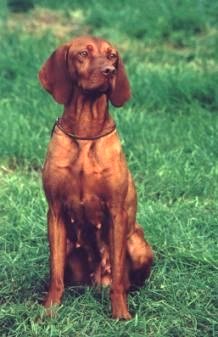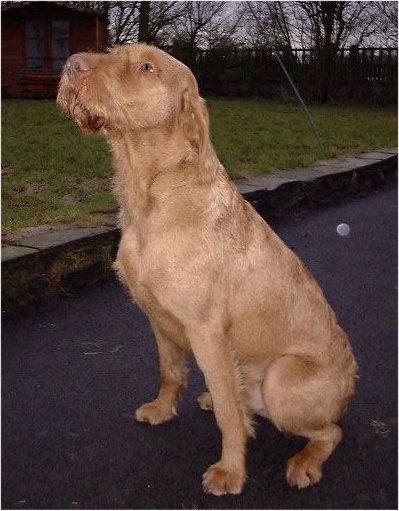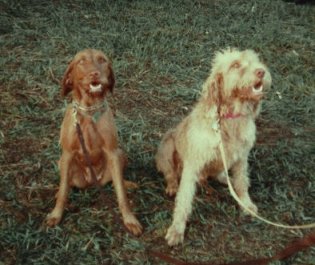Vizsla Coat Types
Breed Standard
Home Page
About Me and the Dogs
View our Dogs
History of the Breed
History of the Breed in the United Kingdom
The breed at work -
Shooting
Falconry
Deer Stalking
Puppy rearing
General Information
Links to Other Gundog Sites
The original Hungarian Vizsla was smooth haired and was the result of crossing the Pannonian Hound with the Yellow Turkish Dog around the 16th Century, with the breed becoming established by the 1850s. The coat is short, smooth, dense, shiny and close to the body with no undercoat.

|
| Sh.Ch. Wicked Lady of Tragus |
The creation of the wirehaired Vizsla started in the 1930s, with the mating of a shorthaired bitch which had a fuller than usual coat to a German Wirehaired Pointer. (For more detail see the history page). The coat in this variety is harsh, hard, and loose fitting, with no gloss. There is a winter undercoat and the hair forms a brush on the back part of the forelegs.

It is interesting to note that longhaired Vizslas can be born in both smooth and wire litters, although this is quite a rare occurrence. Longhaired Vizslas are not registered anywhere in the world but there are some to be found in Europe. There are some longhairs in Holland, for example, which came from wirehaired parents and were born in Hungary (see photos). Also in Holland, in the 1980s there was one litter which was out of a father/daughter mating (the daughter was a longhair), which produced seven pups of which six were longhairs.
 |
 |
As though smooth, wire, and long coats were not enough, it is also possible to get a woolly coat. This photograph shows litter sister and brother, the bitch having a wire coat and the dog a woolly coat.

This document maintained by Irishhounds@aol.com.